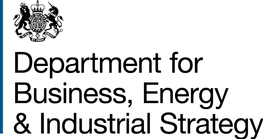NCAR-DOE GCM Model Information
Background Information
The NCAR model version used here is the NCAR-DoE global coupled model (sometimes referred to as the Washington-Meehl coupled model. Submissions to the DDC using the later NCAR CSM and PCM models will follow). Simulations of 20th century climate and projections of climate into the 21st century were conducted with a global coupled climate model without flux adjustment (these experiments are described in Meehl et al. (1999). The global coupled climate model used in these experiments has an atmospheric component with rhomboidal 15 (R15) resolution (roughly 4.5º latitude by 7.5º longitude) with 9 levels, mass flux convection and a cloud albedo feedback scheme; a global 1º by 1º 20-level ocean; and dynamic and thermodynamic sea ice (Meehl and Washington, 1995; Washington and Meehl, 1996). Characteristics of this model are described by:
- Meehl and Washington (1995) for sensitivity aspects of the cloud albedo feedback scheme
- Meehl (1997) for details on the spin-up and systematic errors
- Washington and Meehl (1996) for basic description of a 1% per year CO2 increase experiment and features of the high latitude response in the northern Hemisphere
- Meehl and Washington (1996) for description of the ``El Nino-like" pattern in the 1% CO2 increase sensitivity experiment
- Meehl et al. (1996) for results from a set of sensitivity experiments including the 1% per year CO2 increase experiment compared to experiments that include direct and indirect effects of sulphate aerosols.
Two climate change experiments were performed, both starting in
the year 1900. The first uses greenhouse gas radiative forcing
(represented by equivalent CO2) observed during the 20th century,
and extends greenhouse gas forcing to the year 2035 by increasing
CO2 1% per year compound after 1990 (CO2-only experiment). The
second includes the same greenhouse gas (equivalent CO2) forcing
as the first, but adds the effects of time-varying geographic
distributions of monthly sulphate aerosol radiative forcing (CO2+sulphates
experiment). These are compared to a 135-year control experiment
with no change in external forcing. Climate system responses in
the CO2-only and CO2+sulphates experiments are marked not only
by greater warming at high latitudes in the winter hemisphere,
but also by a global "El Nino-like" pattern in surface
temperature, precipitation, and sea level pressure. This is characterized
by relatively greater increase of SST in the central and eastern
equatorial Pacific compared to the west, a shift of precipitation
maxima from the western Pacific to the central Pacific, mostly
decreases of Asian-Australian monsoon strength, lower pressure
over the eastern tropical Pacific, deeper midlatitude troughs
in the north and south Pacific, and higher pressure over Australasia.
An EOF analysis of surface temperature indicates that the "El
Nino-like" pattern in the model characterizes not only CO2-only
and CO2+sulphates climate system response to time-varying external
forcing, but also internally-generated climate variability at
the El Nino and decadal (9-20 year) timescales. These results
indicate that the "El Nino-like" pattern is a ubiquitous
response in the climate system that occurs at different timescales
due to different forcings. The coupled model climate change experiments
show that time-evolving external forcing can introduce this same
low frequency response pattern into the coupled climate system.
Notes:
The climate sensivity of this model is about 4.6degC.
References
Meehl,G.A. 1997 Modification of surface fluxes from component models in global coupled models J.Climate, 10, 2811-2825.
Meehl,G.A. and Washington,W.M. 1995 Cloud albedo feedback and the super greenhouse effect in a global coupled GCM Climate Dynamics, 11, 399-411.
Meehl,G.A. and Washington,W.M. 1996 El Nino-like climate change in a model with increased atmospheric CO2 concentrations Nature, 382, 56-60.
Meehl,G.A., Washington,W.M., Arblaster,J.M., Bettge,T.W. and Strand Jr.W.G. 1999 Anthropogenic forcing and climate system response in simulations of 20th and 21st century climate J.Climate (submitted)
Meehl,G.A., Washington,W.M., Erickson III,D.J., Briegleb,B.P. and Jaumann,P.J. 1996 Climate change from increased CO2 and the direct and indirect effects of sulphate aerosols Geophys. Res. Letts., 23, 3755-3758.
Washington,W.M. and Meehl,G.A. 1996 High latitude climate change in a global coupled ocean-atmosphere-sea ice model with increased atmospheric CO2 J.Geophys. Res., 101, 12,795-12,801.
Further Details
Jerry Meehl (meehl@meeker.ucar.edu) or Julie Arblaster (jma@cgd.ucar.edu)
 "
"
